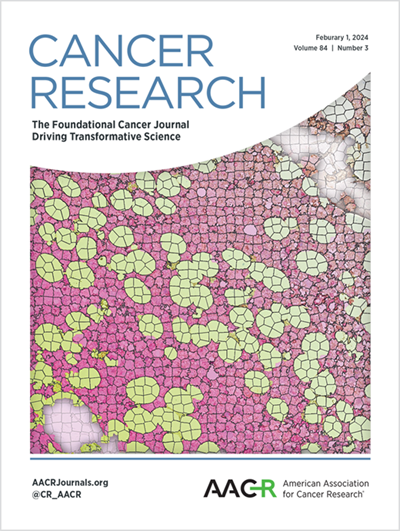Gli2 Facilitates Tumor Immune Evasion and Immunotherapeutic Resistance by Coordinating Wnt Ligand and Prostaglandin Signaling
IF 12.5
1区 医学
Q1 ONCOLOGY
引用次数: 0
Abstract
Therapeutic resistance to immune checkpoint blockade has been commonly linked to the process of mesenchymal transformation (MT) and remains a prevalent obstacle across many cancer types. An improved mechanistic understanding for MT-mediated immune evasion promises to lead to more effective combination therapeutic regimens. Herein, we identified the Hedgehog transcription factor, GLI2, as a key node of tumor-mediated immune evasion and immunotherapy resistance during MT. GLI2 generated an immunotolerant tumor microenvironment through the upregulation of WNT ligand production and increased prostaglandin synthesis. This pathway drove the recruitment, viability, and function of granulocytic myeloid-derived suppressor cells while also impairing type I conventional dendritic cell, CD8+ T cell, and natural killer cell functionality. Pharmacologic inhibition of EP2/EP4 prostaglandin receptor signaling or WNT ligand secretion each reversed a subset of the immunomodulatory effects of GLI2 and prevented primary and adaptive resistance to anti-PD-1 immunotherapy, respectively. A transcriptional GLI2 signature correlated with resistance to anti-PD-1 immunotherapy in stage IV melanoma patients. Together, these findings provide a translational roadmap to direct combination immunotherapies in the clinic.求助全文
约1分钟内获得全文
求助全文
来源期刊

Cancer research
医学-肿瘤学
CiteScore
16.10
自引率
0.90%
发文量
7677
审稿时长
2.5 months
期刊介绍:
Cancer Research, published by the American Association for Cancer Research (AACR), is a journal that focuses on impactful original studies, reviews, and opinion pieces relevant to the broad cancer research community. Manuscripts that present conceptual or technological advances leading to insights into cancer biology are particularly sought after. The journal also places emphasis on convergence science, which involves bridging multiple distinct areas of cancer research.
With primary subsections including Cancer Biology, Cancer Immunology, Cancer Metabolism and Molecular Mechanisms, Translational Cancer Biology, Cancer Landscapes, and Convergence Science, Cancer Research has a comprehensive scope. It is published twice a month and has one volume per year, with a print ISSN of 0008-5472 and an online ISSN of 1538-7445.
Cancer Research is abstracted and/or indexed in various databases and platforms, including BIOSIS Previews (R) Database, MEDLINE, Current Contents/Life Sciences, Current Contents/Clinical Medicine, Science Citation Index, Scopus, and Web of Science.
 求助内容:
求助内容: 应助结果提醒方式:
应助结果提醒方式:


